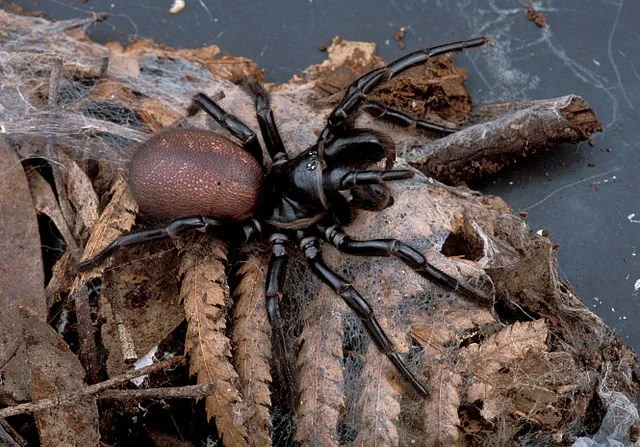Spider Safety Unravelled: Weaving a Web of Protection for Your Family
Heading outdoors but worried about an eight-legged encounter?
learn how to treat a spider bite and prevent a spidey surprise!
Living in South East Queensland offers many wonderful outdoor experiences, but it's essential to be aware of the local spider species and how to stay safe. While the vast majority of spiders are harmless, there are a few that can pose risks, especially to children, the elderly, and those in poor health. In this blog, we'll discuss spider safety for families heading outdoors hiking and camping. Let's dive into the world of arachnids and learn how to enjoy nature while minimising risks.
Understanding South East Queensland Spiders
With approximately 10,000 spider species in Australia, it's helpful to know which ones to watch out for. In South East Queensland, the most concerning spiders are the funnel-web and the redback. These are the only two species with venom potent enough to be potentially dangerous to humans.
Prevalence and Behaviour
Redback spiders are more common in populated areas, making them more frequently encountered. Only female redbacks possess venom dangerous to humans. Funnel-webs, on the other hand, are ground-dwelling and prefer cool, moist conditions. They can be found under logs and rocks.
Spider Prevention
Outdoor Gear Maintenance: Keep your camping and hiking gear well-maintained to deter spiders from settling in areas you frequent.
Warm Months Awareness: Be extra vigilant during the warmer months when spiders are more active. Knowing where spiders are likely to hide is crucial for prevention.
Common Spider Hotspots
Funnel-webs often burrow under logs and rocks close to the ground.
Redback spiders create distinctive webs characterised by a dense matrix of threads with downward-leading channels. These are usually found in dry, dark, and sheltered areas.
Safety Practices
Do:
Keep your campsite clean and tidy.
Educate your kids about spider identification and behaviour.
Check your gear for spiders before using it.
Store gear properly in lidded containers.
Keep your tent or swag zipped up.
Wear closed-toe shoes.
Regularly check your pets' bedding for spiders.
Don't:
Leave shoes or gear on the ground outside.
Handle firewood without gloves.
Put your hands or feet where you can't see.
Try to remove a spider with your hand, especially funnel-web spiders, which can become aggressive when threatened.
Encountering a Spider: What to Do
Stay Calm: Panicking doesn't help.
Assess the Situation: Reacting calmly is crucial. Encourage the spider to move away from your gear or area.
Transportable Items: If the spider is on an item like your jacket, place it on the ground away from you and gently encourage the spider to move away.
Inside Your Tent or Vehicle: Use a dustpan and broom to remove the spider or carefully trap it for relocation.
Recognising Spider Bites
Spider bites are usually defensive reactions. While most spider bites are not serious, they can cause discomfort. Recognizing symptoms is important.
Common Symptoms:
Mild burning sensation or swelling.
Itchiness.
Redness.
Severe Symptoms:
Profuse sweating.
Severe pain that spreads from the bite.
Nausea or vomiting.
Muscular weakness.
Fever.
Headaches.
Abdominal or chest pain.
Increased blood pressure.
Acute Cases:
Loss of consciousness.
Seizures.
Respiratory issues.
Spider Bite First Aid
Stay calm and reassure the bitten person.
Ensure there is no further danger or threat.
If possible, identify the spider (or take a photo).
Seek medical assistance, especially for severe symptoms or specific spider bites.
Funnel-Web Spider Bite First Aid:
Apply a compression bandage over the bite area.
Use a second bandage to wrap the entire limb tightly without restricting blood flow.
Apply a splint.
Keep the person calm and rested.
Seek emergency assistance.
Redback Spider Bite First Aid:
Do not use a compression bandage.
Apply ice or an icepack for up to 20 minutes.
Keep the person calm and rested.
Seek medical assistance.
In Your First-Aid Kit
A well-stocked first-aid kit is a must for outdoor adventures. Some kits include modules for specific situations, making it easy to have the right equipment on hand.
South East Queensland offers abundant opportunities for outdoor fun, and spider safety is an important aspect of these adventures. By educating your family about local spiders, practicing safety measures, and knowing how to respond to bites, you can enjoy the great outdoors with confidence. Remember, most spiders are more scared of us than we are of them. Stay informed, stay prepared, and enjoy the stunning landscapes of South East Queensland!
If you’re curious about how we talk to kids about spider safety, come and join us at Wildlings Forest School. Check out our range of programs on our bookings page and connect with us on our socials @wildlings_forestschool.
We hope to see you in the forest soon! Stay Wild x
Written by Ellen Nesbitt. Ellen is a nature play advocate and creative writer with a passion for helping families connect with the outdoors. She is dedicated to exploring ways to nurture children's creativity, independence, wellbeing and love for nature.
